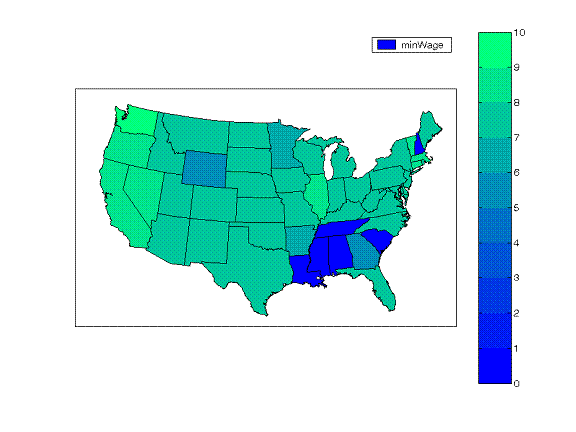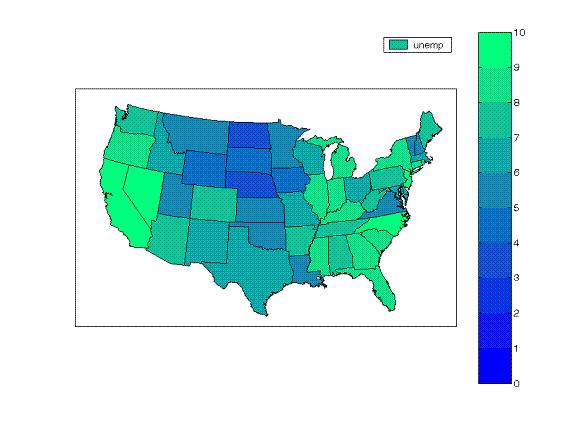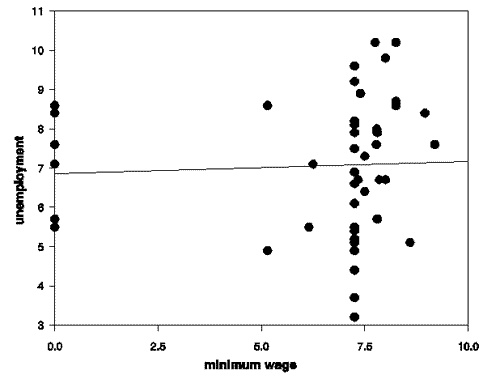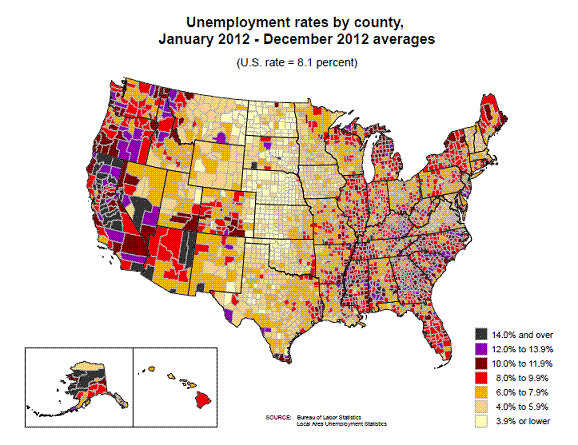With the recent proposal to raise the minimum wage, I noticed that California currently has one of the highest minimum wages ($8.00/hour) and one of the highest unemployment rates (9.8%) in the country.

Minimum wage (in dollars per hour) by state as of Jan 1, 2013. Data source: National Conference of State Legislatures.
However, this does not appear to be a general relation across states. Several of the southern states with no state minimum wage also have unemployment rates that are above the national average.

Unemployment rate (in percent) by state as of Dec 2012. Data source: BLS.
A regression of the unemployment rate on a constant and the minimum wage has an R2 of only 0.002.

Scatter plot of raw data and regression line. Horizontal axis: minimum wage as of January. Vertical axis: unemployment rate as of December.
Of course, it is difficult to use data like these to assess the effect of changing the minimum wage on the unemployment rate. The reason is that there are important differences in a variety of characteristics across states that led some states to choose a higher minimum wage than others. Those differences could themselves have important effects on the unemployment rate that do not come from the minimum wage itself. But the one thing that we can safely conclude from the diagram above is that any relation between the minimum wage and the unemployment rate certainly isn’t obvious in these data.
By the way, here is a more detailed plot of last year’s unemployment rates at the individual county level.

Source: BLS.
- Bulenox: Get 45% to 91% OFF ... Use Discount Code: UNO
- Risk Our Money Not Yours | Get 50% to 90% OFF ... Use Discount Code: MMBVBKSM
Disclaimer: This page contains affiliate links. If you choose to make a purchase after clicking a link, we may receive a commission at no additional cost to you. Thank you for your support!



Leave a Reply